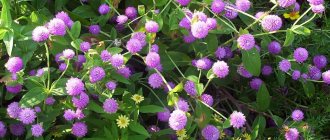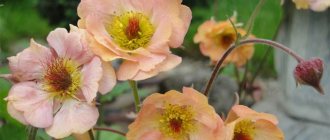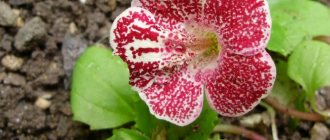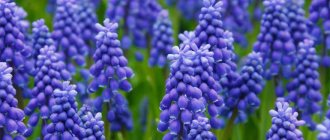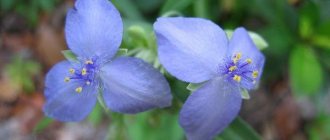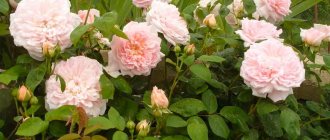Amaranth is a plant that attracted the interest of gardeners at the beginning of the twentieth century. This interest is due to emerging information about its health benefits. Cultivated plant varieties were also brought to Russia from the West. At first, amaranth was grown in the fields as feed for livestock, and in villages it was used to feed various livestock. Now there are many decorative amaranth hybrids obtained through selective breeding.
- 2 Useful properties and contraindications
2.1 Contraindications
- 5.1 Video: how to plant amaranth in open ground
Brief information and cultural features
Amaranth belongs to the Amaranthaceae family. The plant, regardless of the species, is drought-resistant and unpretentious. The culture has the following characteristics:
- Plant height can vary from 30 cm to 3 meters.
- During the flowering period, the bushes are covered with red, burgundy or green inflorescences. The flowers are collected in dense spikes.
- The leaves can reach a length of 20 cm. The color of the leaf blade is varied, from light green to burgundy. Particularly popular are tricolor plants with variegated leaf colors.
- The seeds and leaves contain a large amount of protein, so they are used as food.
The leaves and grains contain large amounts of protein needed by both humans and animals.
Benefits for women
Consumption of amaranth slows down the aging process and has a beneficial effect on the skin, hair, and nails.
Thanks to quick saturation, a person does not overeat and, as a result, does not gain extra pounds.
Amaranth oil has an anti-inflammatory effect and is recommended for painful periods and menopause.
Amaranth contains all the enzymes necessary for the development of the fetus, so gynecologists recommend that pregnant women include it in their diet. It helps cope with depression, prevents the appearance of varicose veins, and improves metabolic processes.
Table of types and varieties of amaranth
There are 4 main types of amaranth: fodder, grain, vegetable and ornamental. Each species includes several varieties. Let's look at each variety in more detail.
| View | Varieties |
| Stern | Aztec, Giant, Lera, Amber, Kizlyarets |
| Vegetable | Valentina, Krepysh, Opopeo, White Leaf (white), In Memory of Kovas |
| Grain | Kharkovsky, Helios, Ultra, Universal, Voronezh |
| Decorative | Dark, Tricolor, Paniculate, Tailed |
"Golden grain of God" of the ancient Indians
The homeland of amaranth is South America. “Golden grain of God”, that’s what the ancient Indians called amaranth. Amaranth fruits are capsules filled with small grains. These grains are edible, they were ground on millstones, mixed with water and baked into flat cakes, and also made amrita - a drink of immortality.
Amaranth in its ancestral homeland of America, before the arrival of Europeans there, was also called “Inca bread” and “Aztec wheat,” and the image of amaranth was considered a sacred symbolism of immortality.
The importance of this valuable product for the last Aztec empire is evidenced by the fact that for the legendary Aztec emperor of the early 16th century, Montezuma II, a tax of 9 thousand tons of amaranth was collected per year.
Varieties of forage amaranth
The variety is used for animal feed. The leaves, inflorescences and roots of the crop are valuable. The plant is grown in large quantities by agricultural organizations and used as a nutritional supplement.
Aztec
The plant can reach a height of up to 1.5 m. It is used to feed cattle and pigs. The leaves are long, green with red splashes. During the flowering period it is covered with large panicles, red or burgundy in color.
Features of the variety:
- is not afraid of spring frosts, so it can be planted in open ground in early spring;
- the seeds can be used to make oil;
- The plant matures completely in 4 months.
If the plant is planted in the ground at the end of May, you can get an abundance of leaves for food. To collect seeds in the southern regions, amaranth is planted no later than May 5. For the northern regions, it is recommended to plant in seedlings after May 15. Otherwise, the seeds will not have time to fully ripen.
Giant
The plant is large in size and reaches a height of 2 m. It can be used not only for feeding animals, but also for obtaining grain. The leaves are green and can reach a length of 20 cm. During the flowering period it is covered with yellow or burgundy inflorescences.
Features of the variety:
- the leaves are juicy and can be used both for making silage and for fresh consumption;
- seeds with a fat content of 8%;
- bushes with lush leaf cover.
The variety is immune to blackleg and withstands drought well, so it is very often chosen for sowing in fields.
Lera
A tall plant can reach a height of up to 2.5 m. Leaves are up to 20 cm long. The leaf blade is juicy, bright green. The inflorescences are green and become deep crimson when ripe.
Features of the variety:
- used to obtain oil and amaranth flour;
- seeds 7% fat;
- When the plant is grown on the sunny side, burgundy veins appear on the leaves.
The inflorescences are dense and resistant to shedding. Therefore, after full ripening, this variety has only 3% seed loss.
Amber
The bushes are 1.5 m high. The leaves reach 10-15 cm in length. The bush is compact, but with a large number of branches. Most often, the Yantar variety is used for additional feeding of cattle.
Features of the variety:
- the panicle consists of a large number of small inflorescences collected into separate ears;
- after ripening, the inflorescences acquire a rich orange color;
- high resistance to drought.
Amaranth can grow on loamy and sandy soil, but its yield is not reduced.
Kizlyarets
The plant is intended for fresh cutting. The height of the bushes is 1.5 m. The leaves are green with a rough surface. The inflorescences are loose and red. Grows on all types of soil.
Features of the variety:
- not used for winter storage;
- high green yield 80 c/ha;
- fast ripening period, only 80 days after planting the seeds in open ground.
The plant is universal and suitable for all types of animals.
How to plant and grow a flower in the garden
Difficulties arise at first. Young seedlings grow slowly. But it is enough to provide plenty of sun, warmth and the right humidity, and the plant quickly gains momentum. And now the small sprout turns into a gorgeous bush-tree.
Agricultural technology also will not take much effort and time, since in open ground amaranth is unpretentious, drought-resistant and only occasionally requires attention.
Planting methods and technology
You should not linger on the choice of soil, since many types of decorative amaranths, usually tall caudate, paniculate and spicate, can grow on any soil: clay, sand and even crushed stone.
There are only two ways of planting: seeds and seedlings. Each has its own nuances, but does not present any particular difficulties.
Seeds
If amaranth was already grown on the site in the previous year, then most likely the next season shoots will sprout in this place, since the seeds have excellent germination and it costs nothing to overwinter them. Such sprouts can be transplanted to the right place and provided with proper care.
If amaranth is planted for the first time, then you need to stock up on seeds in advance and get to work. Sowing begins in May, when the soil has warmed up and the street has constantly warm day and night temperatures of up to +6 degrees.
A place is selected where a huge bush or miniature bicolor will show off in the future. Make small holes in the soil, about 1-2 cm deep, carefully water and lay out the seeds.
The planting scheme depends on the purpose of cultivation. If decoration is needed, then it is better to provide future seedlings with space and plant them at a distance of 70-90 cm from each other; if for culinary purposes, it is better to thicken the plantings. In this case, the amaranth will grow green and bloom late.
Amaranth has rather small seeds, so when sowing they are mixed with sand, but this technique will not allow you to get sparse seedlings, so it would be better to thin them out. Shoots from seeds sown outside will appear in a week.
Seedlings
Planting of seedlings begins in March - mid-April. Any loose soil is poured into a regular seedling box, slightly compacted. Seed material is distributed on top. The seeds are sprinkled with a thin layer of soil. Cover with film or glass and put in a dark and warm place.
When the seeds hatch out, the box is placed on the windowsill and the cover is removed. Usually the first greens appear on the 7-12th day. When the first pair of leaves appears, the seedlings are picked and planted in separate containers. Providing light and regular watering is enough for them. From mid-May, the pots are placed outside to harden and get used to the sun's rays. And at the end of May they are planted in a permanent place.
Before planting, mineral fertilizers are applied to the soil: 20 g of nitroammophoska per 1 square meter.
Vegetable
A universal type of amaranth. Can be used both to decorate the area and for consumption. The culture has high nutritional value and is undemanding to care.
Valentina
A vegetable variety that is used for making salads and teas. Plant height is 1.7 m. Inflorescences are burgundy, 10 cm long. Leaves are purple, about 15 cm long.
Features of culture:
- leaves contain vitamin C and carotene;
- seed yield is low - 500-600 grams per m².
A plant with a short ripening period - only 45 days, therefore it is often grown in summer cottages.
Valentina variety amaranth is used as a food supplement for cases of deficiency of nutrients in the body.
Sturdy
Small compact bushes up to 1.3 m high. The plant has a compact appearance and is distinguished by the juiciness of its leaves. The leaves are ellipsoidal in shape and can reach a length of up to 20-25 cm. The plate is rich green in color. The plant is used to prepare salads and soups.
Features of the variety:
- undemanding to watering, since the root system is well developed and penetrates deep into the soil, extracting water independently;
- the ripening period is 70-80 days;
- from 1 m² you can collect up to 3 kg of seeds.
The inflorescences are green at the beginning of flowering, but as the seeds ripen they become brown.
Opopeo
An edible variety that is often grown in summer cottages. The height of the bush is up to 1.5 m. The leaves are large, up to 20 cm, rich green in color. The inflorescences are green; when the seeds ripen, they acquire a red tint.
Features of the variety:
- leaves with high taste characteristics, used for preparing salads;
- ripening speed is from 40 to 70 days from planting.
Contains a large amount of vitamin C and is used to prevent colds.
White list
Unlike other varieties, this species can be used for growing indoors. The height of the bush is 15-20 cm. The leaves are 5-10 cm long, light green. The inflorescences are white, collected in a loose panicle. Provides a source of nutritious greens throughout the year.
In memory of Covas
A small plant that can reach a height of 1 m. The leaves are 15-20 cm, light green in color, have good taste, suitable for consumption both fresh and after heat treatment. Seed yield is 4 kg per 1 m².
Features of the variety:
- high resistance to drought;
- immunity before blackleg disease.
In order to increase the number of leaves, the plant must be pinched after reaching a height of 30 cm.
Recipes
The herb will help with the following pathologies:
- Dermatitis. 350 g of raw materials are steamed in 2 liters of boiling water. The water bath is kept for 15 minutes. The healing liquid is added to the bath, which is taken morning and evening.
- Gastritis. For painful stomach cramps, a miracle porridge is prepared: a glass of seeds is boiled in 0.5 liters of water for 45 minutes. Nuts and fruits are added to porridge during remission of the disease.
- Cystitis. 3 tbsp. l. chopped herbs and inflorescences are poured into 1 liter of hot water. 200 ml of drink at night is enough to drink for a week.
- Chronic fatigue syndrome. 2 tbsp. l. chamomile, birch buds, St. John's wort and amaranth seeds are infused for 2 hours in 0.5 liters of boiling water. Drink a glass of the drug in the morning and before bed.
- Painful menstruation. 1 tbsp. l. Leaves of the herb are poured into 200 ml of hot water and the healing drink is kept for an hour. Drink the liquid in small sips until the spasms stop.
- Enuresis. You will need fresh inflorescences with seeds that need to be crushed. Steam them in a glass of boiling water and use 1 tsp twice a day.
- Cervical erosion. To make tampons, use cotton wool soaked in 2 tbsp. l. velvet oils. Therapy at home is carried out at night for a week.
Grain
A variety of amaranth that is grown for its grain. Amaranth oil is produced from the seeds, which is of high value.
Kharkovsky
The variety is very popular among summer residents. By growing a plant, you can simultaneously obtain both a forage species and a grain crop. The bushes are tall up to 2.5 m. The leaves are oblong 25 cm in length. The inflorescences are dense yellow, but become burgundy as they mature.
Features of the variety:
- yield 5 kg per m²;
- used both for animal feed and for grain production;
- used in medicine.
If you do not harvest the seeds in a timely manner, they will fall off. The suitable period for collection is the end of August.
Helios
The tall plant has good yield - 25-30 centners of grain can be collected from 1 hectare. The leaves are large and succulent, so the plant is often used to make silage for animals. The height of the bush is 1.8 m. The panicles are dense orange. Features of the variety include high resistance to drought.
Ultra
Grain amaranth has a decorative appearance and is valued for its high yield. The height of an adult plant is 2 - 2.5 m. The inflorescences are up to 30 cm long, yellow in color. The leaves are green with white veins.
Features of the variety:
- grains contain more than 10% fat;
- grain products are used to prepare flour;
- The crop is vulnerable and allows harvesting 70 days after planting.
Amaranth leaves are used to prepare medicinal tinctures against blood vessel diseases.
Station wagon
The variety is easy to care for. It is grown not only for grain, but also for animal feed. The height of the bush is up to 1.2 m. The leaves are large, rich green. The average yield is 20 centners per hectare.
Voronezh
The plant matures 80 days after sowing. Height is 1 m, inflorescence size is 60 cm. The average plant yield is 35 centners per 1 ha. The seeds contain 7% fat and are therefore often used to make oil and for pharmaceutical purposes.
Features of the variety:
- grains are suitable for making flour;
- grows even in dry regions.
The variety can be grown on loamy and sandy soils. Gives a good harvest regardless of weather conditions.
Indications for use
The introduction of the biologically active food supplement “Amaranthus” into the diet is recommended: • To improve the functioning of the liver and activate its detoxification function • As an adjuvant in the prevention and complex treatment of diseases of the liver, gall bladder and biliary tract (biliary dyskinesia, cholelithiasis , viral and alcoholic hepatitis, fatty liver, cholecystitis, cholangitis, cholecystocholangitis, toxic liver damage (including alcoholic origin) • To restore liver function after a course of chemotherapy and radiation therapy or after long-term use of medications • For protection liver with excessive consumption of fatty foods or alcohol •Patients with diabetes mellitus (the Amaranthus dietary supplement includes substances that play an important role in regulating the natural production of the hormone insulin (vitamins B1, B3, potassium, magnesium, phosphorus, manganese, zinc, selenium, chromium ), as well as vitamin E, which helps reduce the body's need for insulin • As an aid to combat obesity (polyunsaturated acids, phospholipids and vitamin E contained in the dietary supplement "Amaranthus" help normalize lipid metabolism) • For chronic constipation (included in the dietary supplement “Amaranthus” germ oil and amaranth oil have a moderate laxative effect) • As part of the prevention and complex treatment of various cardiovascular diseases (atherosclerosis, arterial hypertension, coronary heart disease, cerebrovascular accidents, etc.). The vitamins E, C, D, polyunsaturated fatty acids and flavonoids contained in the dietary supplement "Amaranthus" in complex combination effectively reduce the risk of thrombosis, increase the elasticity of blood vessels and reduce the permeability and fragility of capillaries, normalize blood pressure, and also reduce the content of low-density lipoproteins in the blood (promoting the deposition of cholesterol on the walls of blood vessels) and at the same time increase the level of high-density lipoproteins in the blood (promoting the removal of cholesterol from the walls of blood vessels), thereby preventing the formation of dangerous atherosclerotic plaques in the circulatory system. Components of the Amaranthus dietary supplement, such as vitamin E, squalene, tannins, magnesium and zinc, prevent the development of inflammatory processes in the cardiovascular system, and the potassium, magnesium, phosphorus and calcium contained in this dietary supplement are necessary for the full and smooth functioning of the heart muscle ( myocardium). •As an aid in the prevention and complex therapy of eye diseases (the dietary supplement “Amaranthus” is saturated with substances necessary for the normal functioning of the visual apparatus (vitamins C, E, A, D, group B, flavonoids, manganese, copper, zinc, chromium , selenium). •As part of the complex treatment of traumatic injuries and skin diseases (psoriasis, herpes, fungal and allergic skin diseases, wounds, cuts, bedsores, burns, radiation damage to the skin, frostbite, trophic ulcers). The Amaranthus dietary supplement contains a complex of substances that improve the condition of the skin and determine the anti-inflammatory, antiallergic, antifungal, antiviral and wound healing properties of this drug (squalene, flavonoids, phytosterols, tannins, polyunsaturated acids, vitamins E and A, as well as vitamin C, copper and stimulating the natural synthesis of collagen zinc). flavonoids, selenium and zinc) •To effectively cleanse the body of all kinds of harmful substances (toxins, waste, heavy metal salts, etc.)
Decorative
This type of amaranth has attractive external characteristics. Often used to decorate garden plots and flower beds.
Dark
It got its name due to its burgundy leaves and dark inflorescences. It looks good both as a stand-alone flowerbed decoration and in combination with other plants.
- Amaranthus hypochondriacus . The height of the bush is 1 m. The leaves are small, pointed, green with burgundy splashes. The inflorescences are dark red, collected in a dense panicle. Can be grown on any type of soil and tolerates drought well.
- Pygmy Torch . A low plant up to 70 cm. Elongated leaves, up to 15 cm long. Inflorescences of a rich crimson color in the shape of ears. Looks good in combination with low-growing decorative flowers, such as carnations or petunias.
- Green Thumb . The low-growing plant is distinguished by the rich green color of its leaves and inflorescences. Used to decorate garden paths or flower beds. Also often used to decorate bouquets.
- Amaranth Princess Feather . A tall plant that can be used not only for decoration, but also for grain production. The height of the bushes is 1.7 m. The average yield is 15 centners per 1 ha. The leaves are burgundy, elongated. Red candle-shaped inflorescences.
Tricolor
A feature of the species is the multi-colored leaves, the color of which becomes more saturated during the period of growth of the bush.
- Flaming Fountains . The height of the bush is 1 m. The leaves are drooping, oblong in shape. A special feature is the unusual color of the leaf plate, which combines red, burgundy and green shades. Has high resistance to drought.
- Illumination . A low-growing crop with a height of no more than 40 cm. The leaves are elongated, reaching up to 20 cm in length. The upper part of the bush is colored red and pink. The lower leaves are brown. The shade of the leaf blades changes as the crop grows.
- Perfection . A popular variety that is distinguished by the brightness of its leaves. The height of the bush is 45-50 cm, the leaves are thin, elongated, 20 cm long. The leaf plate is painted in bright red, yellow and green. The leaves acquire the greatest brightness if the bush is grown in a sunny area.
- Fabulous . A spreading bush 40 cm high. The leaves are colored red and pink. Gradually the leaf blade becomes brown or burgundy. The inflorescences are small red.
- Molten Fire . The culture is distinguished by brown-burgundy leaves and rich crimson inflorescences. Looks ideal both in the garden and in decorating bouquets. However, the plant is very demanding of care. When growing amaranth, it is necessary to water it in a timely manner and protect the bush from drafts.
Paniculate
A variety with dark leaves, most often brown. The panicle is well developed, directed upward, but the apex is turned to the side.
- Zwergfackel . A low-growing variety that is often used as a decoration along the border. The height of the bush is 30 cm. The leaves are brown and oblong. The inflorescences are lush, turned to the side.
- Hot Biscuit . Height 1-1.2 m. Leaves are elongated, green. The inflorescences are collected in a dense panicle, which is painted golden. The inflorescences ripen at the end of September, so the crop will decorate the garden plot throughout the summer.
- Miniature torch . A spectacular plant with a height of only 35 cm. The leaves are round and green. The length of the leaf blade is 15 cm. The inflorescences are torch-shaped, painted cherry or burgundy. Amaranth is very popular in creating unique garden compositions.
- Red Spire . The leaves are red, the leaf blade is glossy, so the bush stands out significantly among other plants. The inflorescences are bright red, collected in a loose panicle.
- Oeschberg . Bush up to 1 m high, leaves are light green. Particular attention is drawn to the bright red inflorescences, which are collected in thin spikes. This variety is often used to decorate parks and looks good in bouquets.
Caudate
The culture is characterized by underdeveloped branches. A distinctive feature of the species is its dense hanging panicles.
- Grünschwanz . The plant is 80 cm high. The leaves are small and matte. The variety is especially attractive due to its hanging panicles, which can reach a length of 20 cm. The plant is undemanding in care and easily tolerates changing weather conditions.
- Rotschwanz . The height of the bush is 70 cm. The leaves are matte, green, with carved edges. The inflorescences are loose, collected in small spikes of crimson color. The length of the ears is 30 cm.
- Emerald . Only 60 cm high, elongated leaves can reach 15 cm. The panicles are lush and light green. This variety requires regular watering and grows well only in sunny areas.
- Red . It is considered one of the most common varieties. The height is only 70 cm, the leaves are small, 10 cm long. The inflorescences are very bright, collected in hanging ears. During the flowering period, the bush is covered with ruby inflorescences, which turn brown as the seeds ripen.
- Raspberry beads . The variety received its name due to its hanging crimson-colored inflorescences. The length of the inflorescences is 20-25 cm. The bush is of medium size, up to 70 cm high. It looks attractive not only in the garden, but also in bouquets.
Amaranth is a popular plant that acts not only as an ornamental crop, but is also used in cooking and medicine. In order to choose the right amaranth variety for planting, you need to know what types exist and how they differ.
Care
At first, amaranth grows slowly, but as nutrients accumulate, the plant’s development accelerates. It is easier to care for a flower than for other inhabitants of the garden.
Watering
The flower tolerates dry weather well, but still do not forget to water it on particularly hot days. It is better to do this in the evening hours. After the amaranth has grown enough greenery, watering can practically be stopped.
Top dressing
During the season, 3-4 feedings are carried out with special complex fertilizers or a mixture of mullein and ash. When consuming flower leaves as food, do not overuse nitrogen fertilizers.
Weeding and weed removal
Amaranth is a green manure, so weeds practically do not grow around the flower. Occasionally appearing weeds can be pulled out and the bed can be weeded at the same time. Frequent weeding is done during the period of active growth. It will be helpful to mulch the soil around the stem to retain heat and moisture.
Pinching
You can increase the yield of this unique crop by pinching the top. This procedure will stimulate the growth of side shoots and ensure a good harvest.
Recently, amaranth has become very popular all over the world due to its large number of useful properties, versatility in use and unpretentiousness. You can even grow it at home without devoting a lot of effort and time to it. Thanks to its easy care and endurance, the crop will supply gardeners with useful substances for a long time.

